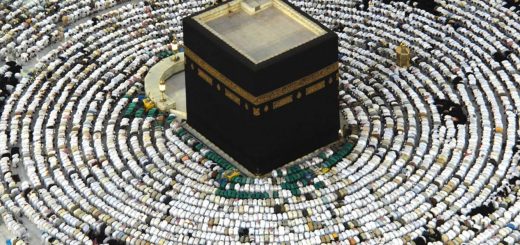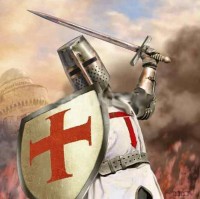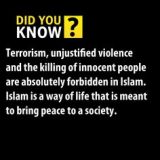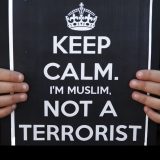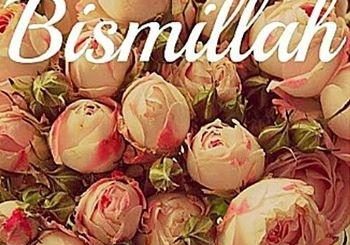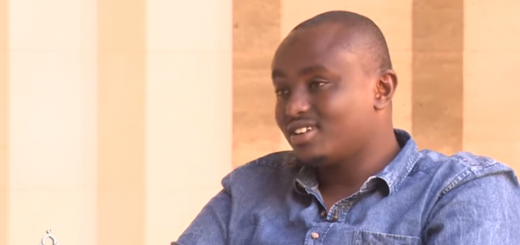Sites of Hajj and Umra
1. Well of Zamzam: water of which is blessed and pure. Allah poured it out as mercy for Hajer and her infant Ismael, and later as blessing to the Islamic Nation. The water never dries and cures all types of diseases except death. This well had dried for a long time, until the grandfather of our Prophet, may the peace and blessing of Allah be upon him, saw a vision in a dream. He went and excavated the well, and ever since, the well has been pouring and it is under Allah’s grace. It is kept pure, when the place floods and the well is filled with sand and stones, it overflows out everything until it becomes pure again.
2. Al Baqi’: cemetery of Al Madina’s people, may Allah be pleased with them all, which include the graves of Ibrahim and Ruqaiya, children of the Prophet, may the peace and blessing of Allah be upon him, Fatima Bint Asad, mother of Ali Bin Abi Taleb. It also includes the graves of Othman Bin Affan, Abi Saeed Al khudary, Sa’ad Bin Mua’d, Abdul Rahman Bin Awf, Othman Bin Madhoun, Malek bin Anas, and the graves of the Prophet’s wives, daughters and member of his family, may Allah be pleased with them all.
3. Al Taneem: a place located in “Al Hil”, and it is about four miles away from the Holy Mosque between Makka and Madina, and it is the Miqa’t for Makka people and those coming to Makka whether for Hajj, Umra or residency.
4. Uhud Mountain: it overlooks Al Madina and it contains the martyrs’ graves. On top of the list of the martyrs is Hamza Bin Abdul Mutaleb, the Prophet’s uncle. The Prophet said: “Uhud is a mountain that loves us and we love it, and it is on one of Paradise’s doors.”
5. Al Rahma Mountain: it is the mountain overlooking Arafa, the Prophet stayed on the foot of the mountain, but did not ascend it, therefore it is advised to climb it.
6. Al Juhfa: Miqa’t of Al Sham people and people coming from their direction. It is not known now, and a new Miqa’t has been assigned called Rabegh.
7. Al Ja’ranah: a place in “Al Hil” near Makka, around 16 kilometres away.
8. Ismael Hijr: part of the Holy House with an arc shape, who entered it, entered the Ka’aba. Circuiting inside the Hijr is not permissible and it must be from outside the Hijr, as Al Ka’aba and the Hijr are one unit that cannot be separated. Praying in the Hijr means praying in Al Ka’aba. The reason for the Hijr being outside the building of Al Ka’aba is that when Quraish decided to rebuild Al Ka’aba they fell short of money, so they only built part of it.
9. The Black Stone: the right hand of Allah on earth saluting his servants, kissed by the Prophet in his last Hajj, and this became a Sunna. It is placed on the southeast outer side of the Ka’aba. The first to place it in this place was Ibrahim, may the peace be upon him, and when Quraish rebuilt Al Ka’aba, the Prophet, may the peace and blessing of Allah be upon him, placed the stone in its place with his own hands.
10. Al Hutaim: it is Ismael’s Stone (see Ismael’s Stone).
11. Thatu Irq: Miqa’t of the Iraqi people, and those coming from their direction; it is about 94 kilometres from Makka.
12. Thu Al Hlifa: Miqa’t the people of Al Madina, and those coming from their direction. It is about 11 kilometres from Al Madina and 45 kilometres from Makka.
13. Rabegh: Miqa’t the people of Al Sham and Turkey, and those coming from their direction. It was Al Juhfa before that, and it is not know now. Rabegh is a small town about 200 kilometres from Makka.
14. Al Rawdhah Al Sharifa: it is in the mosque of the Prophet, may the peace and blessing of Allah be upon him, between his grave and his pulpit, where visitors pray the mosque greeting prayer.
15. Al Safa and Al Marwa: two mountains in Makka, hastening between them is an obligation. Al Safa is a small mountain looking over the Haram from the south. Al Marwa is a small mountain looking over the Haram from the north east, and the distance between them is 400 m, and they are the mountains that Hajer was hastening between them, looking for water for the infant Ismael, may the peace be upon him.
16. Arafa: very large yard outside the boundaries of Al Haram, and about 25 kilometres from Makka. The pilgrims ascend to it on the 9th day of Thi Al Hijja until the sunset, and then they go to Al Muzdalefah. Standing in Arafa is one of the main pillars of Hajj, and it is considered that those who do not stand in Arafa did not do Hajj. Arafa is surrounded by several mountains from east, north and south, and the most famous of them is Al Rahma Mountain, on its foothill, the Prophet, may the peace and blessing of Allah be upon him, stayed in his farewell Hajj.
17. Qirn Al Mana’zel: Miqa’t the people of Najd, Ihsa’ and Iraq, and those coming from their direction, which is known now as “Al Sail Al Kabeer” between Makka and Taef, and it is around 94 Kilometres from Makka.
18. Al Ka’aba Al Musharrafah: the Holy House of Allah, the Kibla of the Muslims, and the first Mosque built on earth. It is exactly at the centre of the earth and is square shaped. Built by Ibrahim and his son Ismael, may the peace be upon them, before the Prophet’s message. After that the caliphs looked after it, and since then, the custodians have been taking good care of it and preparing it for the Hajj. It has different names: Ancient House, Al Bait Al Haram, Kibla, and for its sacredness and holiness, Allah made everything around it sacred, and so is Makka.
19. Al Madina Al Munawwarah: where the Prophet, may the peace and blessing of Allah be upon him, migrated from Makka, and became stronger with many followers. From Al Madina he set to raise the Word of Allah, and in it is his mosque that he built with his own noble hands, and also where he died and was buried in the mosque. In Al Madina lies one of Paradise’s gardens. The Prophet prayed to Allah to make this place blessed and sacred. It is a part from Yethreb and lies between Eir and Uhud Mountains, and it has other names like: Madina and Taba’.
20. Al Muzdalefah: a place between Muna and Arafat where people come to, after standing in Arafat. It has a small mountain called Qazah that is shaped like a horn, where the Imam of the Hajj stands and speaks to the people as the Prophet did, and it is called Al Masha’r Al Haram, which is a flat desert east of the road between Makka and Taef.
21. Median’s Mosques: there are so many mosques that can be visited by those who go to Madina, and they are: the two Kiblas Mosques, the Fateh Mosque, the Friday Mosque, the Qiama Mosque, Abu Baker Al Siddiq Mosque, Omar Bin Al Khattab Mosque, Ali Bin Abi Taleb Mosque and Bilal Ben Rabah Mosque.
22. Al Haram Mosque: Makka is the centre of the World and in the centre of Makka is the mosque and in the centre of the Mosque is the Ka’aba. This mosque is a big praying area surrounding the Kibla, and a prayer in this mosque is equal to a hundred thousand prayers.
23. Al Khif Mosque: at the foot of Muna Mountain where the Prophet, may the peace and blessing of Allah be upon him, stayed in his last Hajj and where a tent was erected for him and he prayed Dhur, Asr, Maghreb, Isha’ and Fajr of the 9th day of Thu Al Hijja. The mosque was built in the same location.
24. Al Nabawi Mosque: the mosque of the Prophet, may the peace and blessing of Allah be upon him, that he built with his own noble hands. It is the second mosque on earth, after Al Masjid Al Haram, where there are no Harams other than them. It was built in Al Madina Al Munawwarah that was made sacred between two mountains, Uhud and Eir. In the mosque is the grave of the Prophet, may the peace and blessing of Allah be upon him, and those of his two companions Abu Baker Al Siddiq and Omar Bin Al Khattab, and in it is one of Paradise’s gardens.
25. Qiba’ Mosque: it is one of the blessed mosques; the Prophet, may the peace and blessing of Allah be upon him, placed its foundation with his own noble hands with the help of his companions. He used to go to the mosque to pray in it, and Aisha, may the peace be upon her, said that the Prophet, may the peace and blessing of Allah be upon him, said: “who made ablution in his home and came to Qiba’ and prayed in it will be considered to have performed a whole Umra”.
26. Namera Mosque: this mosque was built under a small mountain on the side of Arafa called Namera Mountain on the same location where the tent of the Prophet, may the peace and blessing of Allah be upon him, was erected. It is not part of Arafa, but lies on the inside of “Arnah”.
27. Al Masa’: the road that stretches between Al Safa Mountain and Al Marwa Mountain that is almost 400 meters long. It goes in different directions.
28. Al Masha’r Al Haram: also called Qazeh, is the place where the Prophet, may the peace and blessing of Allah be upon him, gave his speech, which became a Sunna after that. The Imam of Hajj stands in the Masha’r and gives the Hajj speech.
29. Al Mua’lla: it is the cemetery of the people of Makka, and it is on the way to Muna, The grave of Lady Khadija, the prophet’s first wife and that of Asma’s Bint Abi Baker, Abi Talib and other members of the Prophet’s family, may Allah be pleased with them all, are located in this cemetery.
30. Ibrahim’s shrine: the stone where Ibrahim stood on and called people for Hajj, and his feet are printed on the stone. The Prophet, may the peace and blessing of Allah be upon him, prayed behind the stone.
31. Makka: blessed town, Allah made it sacred, contains the most holiest place on this world, and the most important of them is Al Ka’aba, where Makka was honoured by having the Prophet, may the peace and blessing of Allah be upon him, born and raised in it. Makka is cornered between two mountains- the Red Mountain (known as Al Ara’f in Al Jahiliyya) and Abu Qubais Mountain. It has different names mentioned in the Holy Qura’n: Makka, Albalad, Alqariah, Umm Alqura, and it is a land that is allowed only for Muslims to enter. Any person coming should be careful, as the good deeds multiply in rewards, also sins multiply because it is sacred, and it has the responsibility of all Hajj and Umra rituals.
32. Al Multazam: is between Al Ka’aba door and the Black Stone, and invocations in it will be answered.
33. Muna: A valley between two mountains east of Makka, around five Kilometres from Al Ka’aba and after Al Muzdalefah, where the Satan has showed up three times for our master Ibrahim, may the peace be upon him, and where Ibrahim threw stones at him, thus starting the obligation of the three Jamrahs. Muslims go to Muna to throw the Jamarat, slaughter, and stay there during the slaughter day and Tashreeq days.
34. Arana Valley: valley on the western side of Arafa. It is a long wide strip but is not part of Arafa.
35. Muhasser Valley: also called Torment Valley. It is on the way back from Arafa to Muzdalifah between Muna and Muzdalifah. Muslims are asked to pass the valley quickly as the Prophet, may the peace and blessing of Allah be upon him, did.
36. Yalamlem: Miqa’t the people of Yemen and those coming from their direction. It is located 54 kilometres south of Makka.
Number of View :2765
